 Facebook
Facebook
 X
X
 Instagram
Instagram
 TikTok
TikTok
 Youtube
Youtube
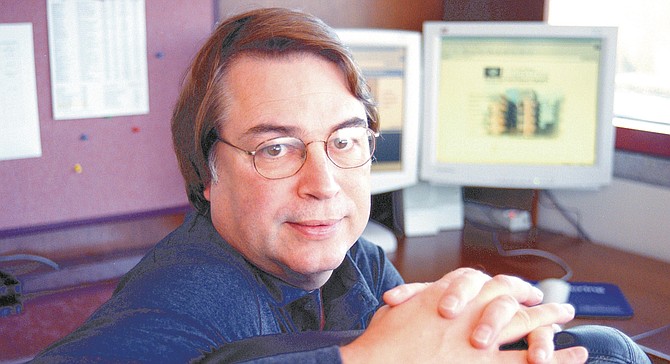

When Governor Gray Davis announced last month that he had awarded $100 million of the state surplus to UCSD and UC Irvine to create one of three new California "Institutes for Science and Innovation," a customary release was issued from the university. The new institute, to be called the California Institute for Telecommunications and Information, proclaims the university, will do nothing less than "revolutionize how we live, work, and communicate.
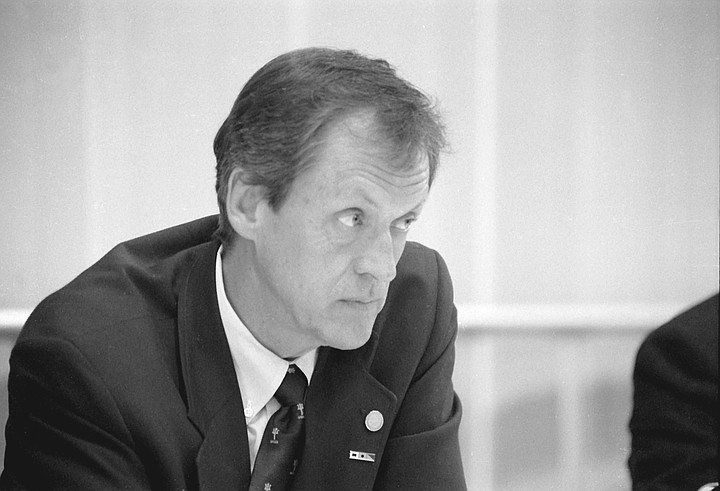
"This institute will leverage UCSD's and UCI's complementary strengths in telecommunications, information technology, and applications with the powerful industry base along the High Tech Coast from San Diego to Irvine," UCSD chancellor Robert C. Dynes, is quoted as saying.
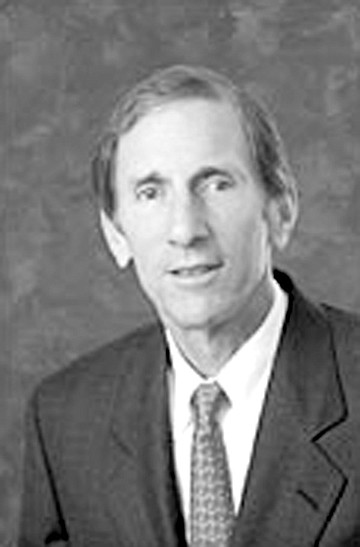
"For example," the release goes on, "cardiac bio-sensors may be developed to allow health care providers to remotely monitor elderly patients; and sensing devices embedded in highways and bridges will provide electronic damage reports immediately after earthquakes and other natural disasters."

"Wouldn't it be nice if you got a call on your cell phone that said, 'Hello, we thought you'd like to know that your right front brake will fail in about 100 miles'?" Dr. Larry Smarr, the institute's newly named director, told the London Guardian.
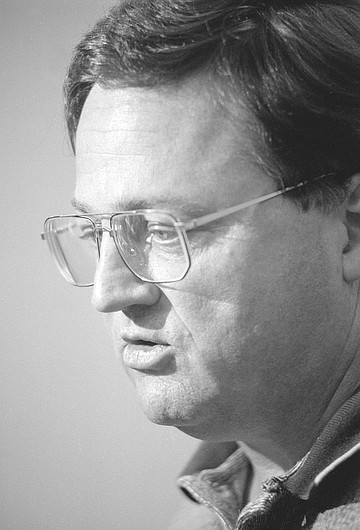
At UC Irvine, the university said, "a 'smart house' will be constructed to demonstrate how computer-controlled appliances, entertainment suites, and security systems can be operated remotely via wireless Internet links." And both UCSD and UC Irvine will get giant new buildings to house the institute, each with futuristic, "World of Tomorrow" facades.
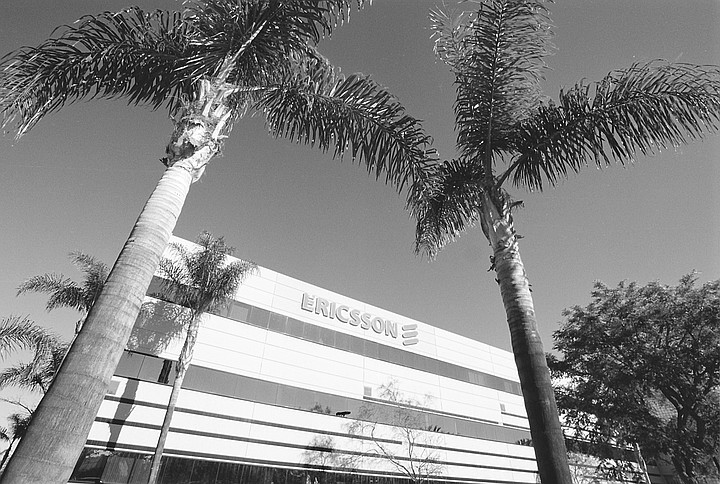
"Each of the buildings will have public viewing areas where visitors will be able to see the research underway and exhibit galleries to explain the impact of the integrated research program," said the release. "The key applications areas to be studied include the environment and civil infrastructure; intelligent transportation; telemedicine, bioinformatics, and digitally enabled genomic medicine; and new media arts."
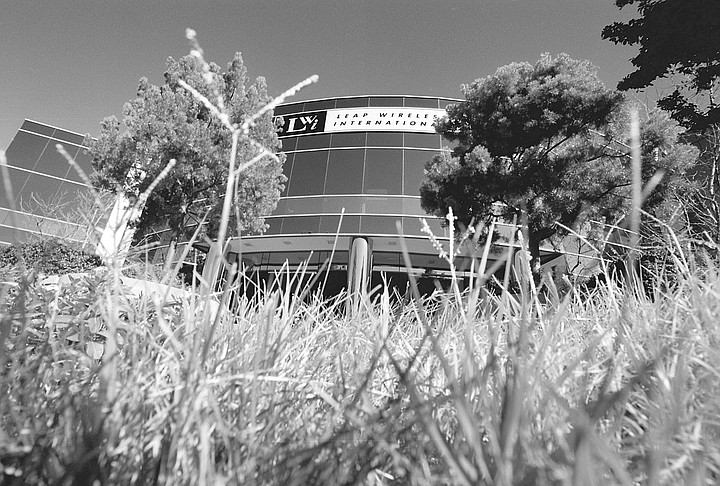
The awarding of the three institutes (the others went to UCLA, which intends to pursue "nanotechnology," and UC San Francisco for bio-medicine) was supposedly the result of a competition held among five UC campuses. Proposals from two other UC campuses lost out: Riverside, which wanted to study plant genetics, and Berkeley, which also wanted to pursue the study of information technology.
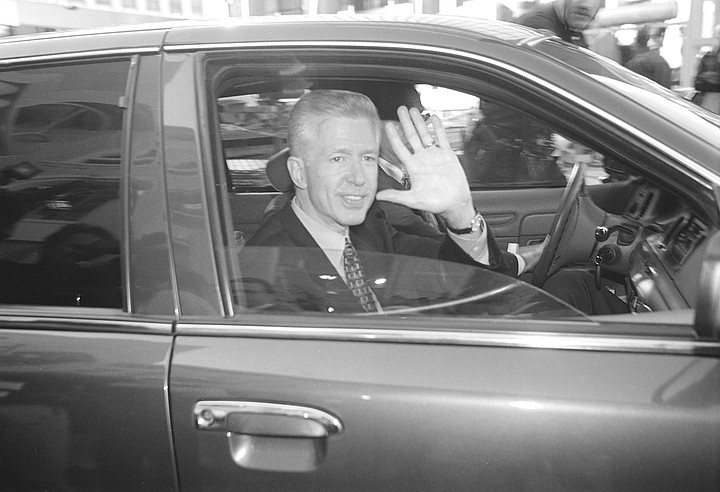
But since the idea of the institutes was reportedly cooked up by none other than Padres owner John Moores and Richard Lerner, head of La Jolla's Scripps Research Institute, along with Davis chief-of-staff and ex-San Diego Democratic congresswoman Lynn Schenk, UCSD's bid had always been regarded by insiders as a sure bet. In addition to owning the Padres, Moores is a venture capitalist who, after giving Davis almost half a million dollars in campaign contributions, was named by the governor to serve as a UC regent.

The institute also had the blessing of Warren Hellman, a wealthy and influential San Francisco venture capitalist and UC Berkeley alum, who is the father-in-law of Chancellor Dynes. Hellman is partnered with Moores in at least one venture, Blackbaud Software, a South Carolina company that specializes in accounting systems for charities. Dynes, in turn, has endorsed the $350 million, taxpayer-financed downtown baseball stadium proposed by Moores.

Adding to the institute's sense of inevitability was the fact that UC president Richard Atkinson, a former UCSD chancellor, was an original board member of and investor in Qualcomm, the cellular-phone giant that was founded in 1985 as a virtual outgrowth of UCSD's engineering school.
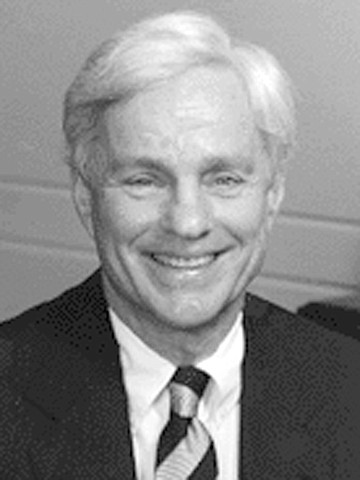
Last year, Atkinson owned more than $200 million of Qualcomm stock, according to the financial disclosure statement he is required to file. Qualcomm, which already has various technology agreements with UCSD, lobbied hard for the institute and has donated $15 million to partially underwrite its creation. Lerner was the selection panel's chairman.

Besides Qualcomm, a number of other electronic ventures announced they had anted up almost $200 million to sponsor the institute. Other contributions included $15 million from cell-phone maker Ericsson and an undisclosed amount from Leap Wireless, a Qualcomm spinoff. Moores and Dynes both sit on the Leap Wireless board and have been compensated with company stock options.
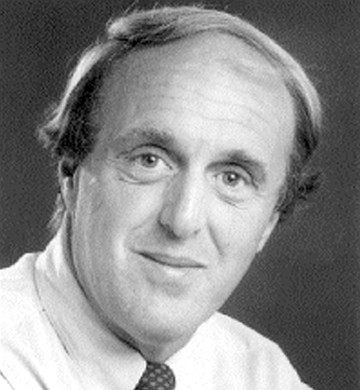
In addition to Leap, Qualcomm, and Ericsson, other participants include IBM, Sun Microsystems, Boeing, Broadcom, Microsoft, Intersil, ST Microelectronics, and Sony. Science Applications International Corporation, a billion-dollar-plus defense contractor and high-tech vendor based in Torrey Pines, is also on the list.

"In total, UCSD and UCI have raised more than $139 million in firm industrial commitments, from 28 industrial partners," according to an institute news release. "Private donors have contributed another $32 million. We also have strong letters of support from another 16 companies with whom we are still engaged in discussions. Therefore, we expect the industrial cost-sharing number to rise considerably over the next six months."
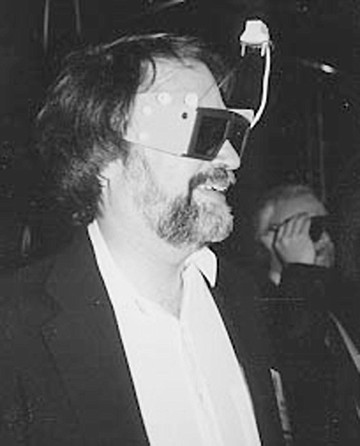
In return for their money, according to a university website, the so-called "industry partners" will "be asked to nominate a senior executive to serve on the Industry Council." The industry council, the website notes, "will help guide our broad strategic vision for the institute. Industry engineers and scientists will be in residence; they will participate in the day-to-day research activities of the institute and offer graduate and undergraduate students valuable insights by serving as mentors to summer interns."
An investment firm called ideaEDGE Ventures, which is listed as an institute "partner," added that "a key reason for ideaEDGE Ventures locating in San Diego is the flow of ideas and students from UCSD, which has been instrumental in establishing San Diego as the leading wireless-technology center in the United States."
But in the world of venture capital, ideas mean money, and skeptics warn that without appropriate safeguards, state taxpayers may end up giving away valuable technology to the industrialists without getting much, if anything, in return. Critics also worry that, without proper policing, serious temptation and conflicts of interest might arise for professors who own stock or who act as consultants to companies that stand to gain financially from the professors' taxpayer-sponsored research.
"I think it would be foolish to think companies will be wide-eyed idealists that will let scientists pursue whatever interesting new finding they have," Bruce Jaffee, an outspoken UC Davis professor of nematology, told the Sacramento Bee last January when Davis first announced plans for the so-called "public-private" institutes.
State law already requires that the financial proceeds of inventions resulting from research at UC labs be split with the university. But critics argue that the state has not spent enough money to keep track of professors and their inventions and often gives away millions of dollars in potential royalty revenue because the university's so called "technology transfer" offices are understaffed.
"Faculty work with these public/private labs, and they will have the best equipment and technicians and access to students' help," warned Jaffee. "If they want to continue that existence, they had better learn how to make someone happy. That someone is probably going to be in a corporate boardroom someplace."
Enter Dr. Larry Smarr, a UCSD professor of engineering and the newly named director of the California Institute for Telecommunications and Information. Smarr arrived here in a blaze of publicity from the University of Illinois at Urbana-Champaign last year. The announcement of Smarr's pending appointment to run the institute here was hailed in a New York Times story that credited him with helping create the Internet and inventing the Web browser.
"He founded the National Center for Supercomputer Applications at the University of Illinois at Urbana-Champaign in 1985, and helped to develop a network that linked it to the nation's other four supercomputer centers," noted the Times. "Yet those advances pale beside the fact that seven years ago, a small group of student and faculty researchers working at Dr. Smarr's center created the first graphical Web browser, Mosaic, igniting the World Wide Web and the electronic-commerce explosion."
But Marc Andreessen, one of Smarr's former associates, who went on to become a billionaire by founding Netscape, was quoted as complaining that Smarr's lab "had a hard time bringing innovations to the marketplace." Andreessen was able to start Netscape by licensing the institute's Mosaic technology, but only after overcoming the university's resistance.
"What they never got at NCSA [National Center for Supercomputer Applications] what they never had, was a culture of entrepreneurial spinoffs," Andreessen told the paper. "If he can add that at the new institute, a culture that permits people to go off and start companies, then I think he will really have something."
For his part, Smarr was quoted as saying he had headed west to "more fertile ground for what he calls 'I.P.O. Capitalism.'" He added, "Based on the electronic-commerce boom that followed the development of the Mosaic Web browser, I realized that a new model of growth was emerging. I knew I had to get to a place where there was an explosive private sector."
Smarr's much-heralded arrival has made critics even more skeptical about the university's ability to monitor and control the effect and consequences of private funding on the flow of "intellectual property" from the university to industry. According to the university's conflict-of-interest office in Oakland, no steps have yet been taken to establish personal financial-reporting requirements for Smarr or his deputies at the new institute.
Under state law, most executive employees at the university are required to file such annual disclosures. For example, Robert W. Conn, dean of UCSD's engineering school, a major backer of the proposed institute who helped shepherd it through the governor's selection process, reports that he owns a one-man consulting company, Conn Engineering and Consulting, based in his Del Mar home, whose clients include Science Applications International Corporation, a participant in the new institute.
Conn reported that during 1999, the latest year for which information is available, he was paid more than $10,000 by SAIC as well as the Los Alamos National Laboratory in New Mexico. He also reported owning a total of more than a million dollars' worth of stock in a variety of high-tech companies, including SAIC, Broadcom, Microsoft, and Mission Ventures. All of these firms, according to the university's website, are involved with the new institute.
According to a news release on the website, "Mission Ventures will provide counsel on prospects for commercialization of innovations created by [the institute], as well as future investments in technologies developed by [the institute] if appropriate." Conn's statement of economic interest describes the nature of his greater-than-$100,000 interest in Mission Ventures as "Limited Partner Affiliate."
Interviewed by phone from his office at UCSD, Smarr argues that the influence of private money on the policies of his new institution has been overplayed. Describing a cornucopia of potential services and devices to be created by the institute, from remote measuring of chromium pollution in Mission Bay to warnings of sewage in the city's storm drains, Smarr insists that the public welfare is his top priority.
As for when the conflict-of-interest code for the new institute would be ready, Smarr said, "I think they're working on that. I'm not even sure I'm director officially yet. Because I've got to fly up and give a six-minute talk to the regents on Thursday, I guess. And so until the regents okay everything, I'm not even sure.
"I fully intend to file all the disclosure papers. Everything I do with industry is very publicly known; it's on Web pages or press releases about it, and everything is out there. As an incoming faculty member, as I understand it, my first reporting would be in August at the end of my first year.
"But I suspect that I would just go ahead and work with the university and do it sooner than that, but I'm waiting for the final designation that I'm director, and they presumably will ask me to fill a bunch of stuff in, and I intend to fully disclose everything."
Smarr says his personal holdings include interest in a company called WebEx that is included on a list of institute sponsors. Smarr says he is on the company's advisory board. He adds that the firm's participation in the institute is limited to contributing its Web-conferencing software.
"They are a participant; they are making their software available to the institute. That's the interesting thing about this. Most of the companies that are providing things, there are only a few of them who are actually asking for sponsored research, and obviously that's not with me; I don't get to do any research anymore.
"I've had 15 years of dealing with corporate partners at the National Center for Supercomputer Applications, and these were very large companies: J.P. Morgan, Sears, Allstate, Boeing, American Airlines, Caterpillar, Shell Oil, and so on. So it's not like I'm inexperienced in this area. And I've raised a lot of money in the past from these companies.
"But what struck me as very positive about the experience here compared to Illinois is that an awful lot of this money is actually no-strings-attached. It's clear that the dominant concern industry has is getting enough people to hire, just turning out enough students who are excited and interested in these new technology areas, so we've got a lot of money, many millions of dollars over the next four years for student fellowships. There's money for endowed professorships.
"There's really very, very little discussion about intellectual property, and I think that's sort of a trend; maybe we're seeing a more enlightened approach here beginning to develop instead of 'Here's money, now do something for me.' I don't see that much at all."
When asked for specifics about which companies have agreed to directly sponsored research -- the fruits of which could be licensed to the companies by the university -- and which firms are providing money only because they are concerned with the public welfare, Smarr is vague on details.
"Basically I'm not involved in any of this directly. One thing you may not be aware of is that there are two divisions [of the institute] essentially, UCSD and UC Irvine. So I'm sort of, like, the vision guy trying to, like, get it together between them and between the government and between the community.
"I gave six talks just last week. I'm just trying to talk to the community and talk to the various players. And each of the companies actually is with one of the campuses, and so the two directors of the divisions -- Ramesh Rao and Peter Rentzepis, here and at UC Irvine -- they deal with all the details of implementation of all of this. I don't sign anything."
Most of the institute's agreements with private industry, he says, are "pretty general. The company basically says, 'Here are general technology areas that I'm interested in,' like wireless Internet or data mining or something. So what they do is, we send it out to the faculty and say, 'So, which of you guys would be interested in working in these areas?' send that back to the companies, and then the companies talk to the faculty."
Asked where copies of the contracts between the institute and its sponsors were kept, Smarr responds, "I don't have any sitting around. I don't know where they are. This is a unit of the two campuses. So the chancellors had already agreed on the name and the theme of the institute and the way they were going to go after industry and everything. I wasn't recruited for this job; I was recruited as a professor in computer science. I actually did not want to run another big thing; I'd just done that for 15 years, but I got drafted, basically. And I'm happy about that, but it was already well underway, because I didn't even become a professor until July first, and this process was going on since December [1999].
"UCSD and UC Irvine are completely separately administering the contracts. Everything is going through the normal University of California offices and intellectual-property people and everybody. There's nothing our institute has -- we don't have anybody to do it, we don't have any staff. So we're relying entirely on the campuses.
"It's kind of a collective thing. I know they're looking at it, they're reviewing any agreements made on intellectual property, and I've just stayed out of that loop. You ask a good question; I should have an answer, but this has all sort of been done in parallel with all of these companies, so I'm not trying to be evasive at all, but I don't really know who all is being involved, because I don't do operational stuff."
Asked whether the contracts might be available for inspection by outsiders, he replies, "Whenever it becomes public, in most cases, I presume it's not, but I don't know. Again, I'm not signing anything, I'm not in any of those loops, and I really don't understand what the rules and regulations are about that. I just follow them."
Smarr says he is so hands-off, he doesn't even know his own salary.
"Tell you the truth, I don't know. I don't know the number. I don't really think much about money, frankly. So I couldn't give you a specific number. The money just goes directly into my account, I never see it. If my wife asked me, I wouldn't know. I really just don't spend much time focusing on my own personal situation; I spend most of it trying to put together these big projects."
University officials declined to provide Smarr's salary until they received a request under the California Public Records Act. The university responded that it is $169,600 annually. County records show that the University of California last June lent him $1 million to buy a house in La Jolla for nearly $1.5 million.
Responding to a question about how much he makes from the consulting work he does and the boards he serves on, he says, "Well, so far, very little. Most of it is in startups that are pre-IPO and things like that. And most of it also is vested over three or four years, and I'm just starting in most things, so I don't have the stock, the full amount for another three or four years.
"I'm never operationally involved in any companies, I only advise companies. That is, I'm either an advisor or on the board or something like that, but I don't have any operational position in the company. They remunerate you for services, and usually these days companies will do it in stock or money or both.
In addition to WebEx, the Web-conferencing company, Smarr is co-founder and board chairman of a new Illinois venture called KnowledgePort, which seeks to represent professors at the University of Illinois who wish to profit from selling their ideas and research to private companies.
"When you talk to faculty at universities, many times what you'll hear is that they feel that things are still so restrictive that the only way they can get an idea to market is to leave the university and set up a company of their own and sort of become a businessman.
"Well, the trouble is that most faculty aren't very good businessmen, and so what happens is that you get a company that doesn't have very good businessmen, and the university loses a good researcher and teacher. And I think it's wrong to have to force people into that mold.
"So what KnowledgePort is about is to say, 'Couldn't we make things a little more flexible?' So a professor could just become, say, an advisor to a company and perhaps have an interest in it, but not have to leave the university and then the students don't have anybody to teach them and there are fewer people doing research and so forth.
"KnowledgePort would take ideas and act as brokers for them, to try to get the intellectual property out. Often, for instance, a professor will have a piece of intellectual property, which is, by itself, not enough to make a company but which might turn out to be a nice service. To do it he's either got to leave the university, which is not a good idea, or he or she would have to sell it to a company and not see it done the way they'd want it to be done. So it's kind of an experiment to see if we can form a way of having a more flexible set of avenues for getting ideas to the marketplace.
"Nothing makes anybody go to KnowledgePort. Nobody has to go to Knowledge Port. Faculty would only do it because they would feel that's the way they want to do it as opposed to going to a venture capitalist, starting their own business, whatever. There's nothing the University of Illinois does that gives any preferential treatment to KnowledgePort."
Smarr also argues that the collaborative nature of his institute will also tend to weigh against professors going at it alone and illegally selling their technological breakthroughs without taxpayers getting their fair share.
"The faculty in my institute is already here, and they are already doing whatever they are doing. My institute is about collaboration. So my institute is about getting people to share what they are doing with other people. Say, a computer scientist working together with a biologist. What that tends to do is spread ideas early and that tends to -- compared to the normal way academe works -- make it less likely that individuals are going to have something that they are saying, 'Only I did this.'
"What I'm saying, it's kind of a second-order effect compared to the normal university, where individual faculty will cut a deal with somebody in industry. Here, because the industry is working, sort of, with the collective -- I think there may be some examples of things that will come up, but I think it's going to be much less likely than just the normal day-to-day work that the university is already doing."



When Governor Gray Davis announced last month that he had awarded $100 million of the state surplus to UCSD and UC Irvine to create one of three new California "Institutes for Science and Innovation," a customary release was issued from the university. The new institute, to be called the California Institute for Telecommunications and Information, proclaims the university, will do nothing less than "revolutionize how we live, work, and communicate.

"This institute will leverage UCSD's and UCI's complementary strengths in telecommunications, information technology, and applications with the powerful industry base along the High Tech Coast from San Diego to Irvine," UCSD chancellor Robert C. Dynes, is quoted as saying.

"For example," the release goes on, "cardiac bio-sensors may be developed to allow health care providers to remotely monitor elderly patients; and sensing devices embedded in highways and bridges will provide electronic damage reports immediately after earthquakes and other natural disasters."

"Wouldn't it be nice if you got a call on your cell phone that said, 'Hello, we thought you'd like to know that your right front brake will fail in about 100 miles'?" Dr. Larry Smarr, the institute's newly named director, told the London Guardian.

At UC Irvine, the university said, "a 'smart house' will be constructed to demonstrate how computer-controlled appliances, entertainment suites, and security systems can be operated remotely via wireless Internet links." And both UCSD and UC Irvine will get giant new buildings to house the institute, each with futuristic, "World of Tomorrow" facades.

"Each of the buildings will have public viewing areas where visitors will be able to see the research underway and exhibit galleries to explain the impact of the integrated research program," said the release. "The key applications areas to be studied include the environment and civil infrastructure; intelligent transportation; telemedicine, bioinformatics, and digitally enabled genomic medicine; and new media arts."

The awarding of the three institutes (the others went to UCLA, which intends to pursue "nanotechnology," and UC San Francisco for bio-medicine) was supposedly the result of a competition held among five UC campuses. Proposals from two other UC campuses lost out: Riverside, which wanted to study plant genetics, and Berkeley, which also wanted to pursue the study of information technology.

But since the idea of the institutes was reportedly cooked up by none other than Padres owner John Moores and Richard Lerner, head of La Jolla's Scripps Research Institute, along with Davis chief-of-staff and ex-San Diego Democratic congresswoman Lynn Schenk, UCSD's bid had always been regarded by insiders as a sure bet. In addition to owning the Padres, Moores is a venture capitalist who, after giving Davis almost half a million dollars in campaign contributions, was named by the governor to serve as a UC regent.

The institute also had the blessing of Warren Hellman, a wealthy and influential San Francisco venture capitalist and UC Berkeley alum, who is the father-in-law of Chancellor Dynes. Hellman is partnered with Moores in at least one venture, Blackbaud Software, a South Carolina company that specializes in accounting systems for charities. Dynes, in turn, has endorsed the $350 million, taxpayer-financed downtown baseball stadium proposed by Moores.

Adding to the institute's sense of inevitability was the fact that UC president Richard Atkinson, a former UCSD chancellor, was an original board member of and investor in Qualcomm, the cellular-phone giant that was founded in 1985 as a virtual outgrowth of UCSD's engineering school.

Last year, Atkinson owned more than $200 million of Qualcomm stock, according to the financial disclosure statement he is required to file. Qualcomm, which already has various technology agreements with UCSD, lobbied hard for the institute and has donated $15 million to partially underwrite its creation. Lerner was the selection panel's chairman.

Besides Qualcomm, a number of other electronic ventures announced they had anted up almost $200 million to sponsor the institute. Other contributions included $15 million from cell-phone maker Ericsson and an undisclosed amount from Leap Wireless, a Qualcomm spinoff. Moores and Dynes both sit on the Leap Wireless board and have been compensated with company stock options.

In addition to Leap, Qualcomm, and Ericsson, other participants include IBM, Sun Microsystems, Boeing, Broadcom, Microsoft, Intersil, ST Microelectronics, and Sony. Science Applications International Corporation, a billion-dollar-plus defense contractor and high-tech vendor based in Torrey Pines, is also on the list.

"In total, UCSD and UCI have raised more than $139 million in firm industrial commitments, from 28 industrial partners," according to an institute news release. "Private donors have contributed another $32 million. We also have strong letters of support from another 16 companies with whom we are still engaged in discussions. Therefore, we expect the industrial cost-sharing number to rise considerably over the next six months."

In return for their money, according to a university website, the so-called "industry partners" will "be asked to nominate a senior executive to serve on the Industry Council." The industry council, the website notes, "will help guide our broad strategic vision for the institute. Industry engineers and scientists will be in residence; they will participate in the day-to-day research activities of the institute and offer graduate and undergraduate students valuable insights by serving as mentors to summer interns."
An investment firm called ideaEDGE Ventures, which is listed as an institute "partner," added that "a key reason for ideaEDGE Ventures locating in San Diego is the flow of ideas and students from UCSD, which has been instrumental in establishing San Diego as the leading wireless-technology center in the United States."
But in the world of venture capital, ideas mean money, and skeptics warn that without appropriate safeguards, state taxpayers may end up giving away valuable technology to the industrialists without getting much, if anything, in return. Critics also worry that, without proper policing, serious temptation and conflicts of interest might arise for professors who own stock or who act as consultants to companies that stand to gain financially from the professors' taxpayer-sponsored research.
"I think it would be foolish to think companies will be wide-eyed idealists that will let scientists pursue whatever interesting new finding they have," Bruce Jaffee, an outspoken UC Davis professor of nematology, told the Sacramento Bee last January when Davis first announced plans for the so-called "public-private" institutes.
State law already requires that the financial proceeds of inventions resulting from research at UC labs be split with the university. But critics argue that the state has not spent enough money to keep track of professors and their inventions and often gives away millions of dollars in potential royalty revenue because the university's so called "technology transfer" offices are understaffed.
"Faculty work with these public/private labs, and they will have the best equipment and technicians and access to students' help," warned Jaffee. "If they want to continue that existence, they had better learn how to make someone happy. That someone is probably going to be in a corporate boardroom someplace."
Enter Dr. Larry Smarr, a UCSD professor of engineering and the newly named director of the California Institute for Telecommunications and Information. Smarr arrived here in a blaze of publicity from the University of Illinois at Urbana-Champaign last year. The announcement of Smarr's pending appointment to run the institute here was hailed in a New York Times story that credited him with helping create the Internet and inventing the Web browser.
"He founded the National Center for Supercomputer Applications at the University of Illinois at Urbana-Champaign in 1985, and helped to develop a network that linked it to the nation's other four supercomputer centers," noted the Times. "Yet those advances pale beside the fact that seven years ago, a small group of student and faculty researchers working at Dr. Smarr's center created the first graphical Web browser, Mosaic, igniting the World Wide Web and the electronic-commerce explosion."
But Marc Andreessen, one of Smarr's former associates, who went on to become a billionaire by founding Netscape, was quoted as complaining that Smarr's lab "had a hard time bringing innovations to the marketplace." Andreessen was able to start Netscape by licensing the institute's Mosaic technology, but only after overcoming the university's resistance.
"What they never got at NCSA [National Center for Supercomputer Applications] what they never had, was a culture of entrepreneurial spinoffs," Andreessen told the paper. "If he can add that at the new institute, a culture that permits people to go off and start companies, then I think he will really have something."
For his part, Smarr was quoted as saying he had headed west to "more fertile ground for what he calls 'I.P.O. Capitalism.'" He added, "Based on the electronic-commerce boom that followed the development of the Mosaic Web browser, I realized that a new model of growth was emerging. I knew I had to get to a place where there was an explosive private sector."
Smarr's much-heralded arrival has made critics even more skeptical about the university's ability to monitor and control the effect and consequences of private funding on the flow of "intellectual property" from the university to industry. According to the university's conflict-of-interest office in Oakland, no steps have yet been taken to establish personal financial-reporting requirements for Smarr or his deputies at the new institute.
Under state law, most executive employees at the university are required to file such annual disclosures. For example, Robert W. Conn, dean of UCSD's engineering school, a major backer of the proposed institute who helped shepherd it through the governor's selection process, reports that he owns a one-man consulting company, Conn Engineering and Consulting, based in his Del Mar home, whose clients include Science Applications International Corporation, a participant in the new institute.
Conn reported that during 1999, the latest year for which information is available, he was paid more than $10,000 by SAIC as well as the Los Alamos National Laboratory in New Mexico. He also reported owning a total of more than a million dollars' worth of stock in a variety of high-tech companies, including SAIC, Broadcom, Microsoft, and Mission Ventures. All of these firms, according to the university's website, are involved with the new institute.
According to a news release on the website, "Mission Ventures will provide counsel on prospects for commercialization of innovations created by [the institute], as well as future investments in technologies developed by [the institute] if appropriate." Conn's statement of economic interest describes the nature of his greater-than-$100,000 interest in Mission Ventures as "Limited Partner Affiliate."
Interviewed by phone from his office at UCSD, Smarr argues that the influence of private money on the policies of his new institution has been overplayed. Describing a cornucopia of potential services and devices to be created by the institute, from remote measuring of chromium pollution in Mission Bay to warnings of sewage in the city's storm drains, Smarr insists that the public welfare is his top priority.
As for when the conflict-of-interest code for the new institute would be ready, Smarr said, "I think they're working on that. I'm not even sure I'm director officially yet. Because I've got to fly up and give a six-minute talk to the regents on Thursday, I guess. And so until the regents okay everything, I'm not even sure.
"I fully intend to file all the disclosure papers. Everything I do with industry is very publicly known; it's on Web pages or press releases about it, and everything is out there. As an incoming faculty member, as I understand it, my first reporting would be in August at the end of my first year.
"But I suspect that I would just go ahead and work with the university and do it sooner than that, but I'm waiting for the final designation that I'm director, and they presumably will ask me to fill a bunch of stuff in, and I intend to fully disclose everything."
Smarr says his personal holdings include interest in a company called WebEx that is included on a list of institute sponsors. Smarr says he is on the company's advisory board. He adds that the firm's participation in the institute is limited to contributing its Web-conferencing software.
"They are a participant; they are making their software available to the institute. That's the interesting thing about this. Most of the companies that are providing things, there are only a few of them who are actually asking for sponsored research, and obviously that's not with me; I don't get to do any research anymore.
"I've had 15 years of dealing with corporate partners at the National Center for Supercomputer Applications, and these were very large companies: J.P. Morgan, Sears, Allstate, Boeing, American Airlines, Caterpillar, Shell Oil, and so on. So it's not like I'm inexperienced in this area. And I've raised a lot of money in the past from these companies.
"But what struck me as very positive about the experience here compared to Illinois is that an awful lot of this money is actually no-strings-attached. It's clear that the dominant concern industry has is getting enough people to hire, just turning out enough students who are excited and interested in these new technology areas, so we've got a lot of money, many millions of dollars over the next four years for student fellowships. There's money for endowed professorships.
"There's really very, very little discussion about intellectual property, and I think that's sort of a trend; maybe we're seeing a more enlightened approach here beginning to develop instead of 'Here's money, now do something for me.' I don't see that much at all."
When asked for specifics about which companies have agreed to directly sponsored research -- the fruits of which could be licensed to the companies by the university -- and which firms are providing money only because they are concerned with the public welfare, Smarr is vague on details.
"Basically I'm not involved in any of this directly. One thing you may not be aware of is that there are two divisions [of the institute] essentially, UCSD and UC Irvine. So I'm sort of, like, the vision guy trying to, like, get it together between them and between the government and between the community.
"I gave six talks just last week. I'm just trying to talk to the community and talk to the various players. And each of the companies actually is with one of the campuses, and so the two directors of the divisions -- Ramesh Rao and Peter Rentzepis, here and at UC Irvine -- they deal with all the details of implementation of all of this. I don't sign anything."
Most of the institute's agreements with private industry, he says, are "pretty general. The company basically says, 'Here are general technology areas that I'm interested in,' like wireless Internet or data mining or something. So what they do is, we send it out to the faculty and say, 'So, which of you guys would be interested in working in these areas?' send that back to the companies, and then the companies talk to the faculty."
Asked where copies of the contracts between the institute and its sponsors were kept, Smarr responds, "I don't have any sitting around. I don't know where they are. This is a unit of the two campuses. So the chancellors had already agreed on the name and the theme of the institute and the way they were going to go after industry and everything. I wasn't recruited for this job; I was recruited as a professor in computer science. I actually did not want to run another big thing; I'd just done that for 15 years, but I got drafted, basically. And I'm happy about that, but it was already well underway, because I didn't even become a professor until July first, and this process was going on since December [1999].
"UCSD and UC Irvine are completely separately administering the contracts. Everything is going through the normal University of California offices and intellectual-property people and everybody. There's nothing our institute has -- we don't have anybody to do it, we don't have any staff. So we're relying entirely on the campuses.
"It's kind of a collective thing. I know they're looking at it, they're reviewing any agreements made on intellectual property, and I've just stayed out of that loop. You ask a good question; I should have an answer, but this has all sort of been done in parallel with all of these companies, so I'm not trying to be evasive at all, but I don't really know who all is being involved, because I don't do operational stuff."
Asked whether the contracts might be available for inspection by outsiders, he replies, "Whenever it becomes public, in most cases, I presume it's not, but I don't know. Again, I'm not signing anything, I'm not in any of those loops, and I really don't understand what the rules and regulations are about that. I just follow them."
Smarr says he is so hands-off, he doesn't even know his own salary.
"Tell you the truth, I don't know. I don't know the number. I don't really think much about money, frankly. So I couldn't give you a specific number. The money just goes directly into my account, I never see it. If my wife asked me, I wouldn't know. I really just don't spend much time focusing on my own personal situation; I spend most of it trying to put together these big projects."
University officials declined to provide Smarr's salary until they received a request under the California Public Records Act. The university responded that it is $169,600 annually. County records show that the University of California last June lent him $1 million to buy a house in La Jolla for nearly $1.5 million.
Responding to a question about how much he makes from the consulting work he does and the boards he serves on, he says, "Well, so far, very little. Most of it is in startups that are pre-IPO and things like that. And most of it also is vested over three or four years, and I'm just starting in most things, so I don't have the stock, the full amount for another three or four years.
"I'm never operationally involved in any companies, I only advise companies. That is, I'm either an advisor or on the board or something like that, but I don't have any operational position in the company. They remunerate you for services, and usually these days companies will do it in stock or money or both.
In addition to WebEx, the Web-conferencing company, Smarr is co-founder and board chairman of a new Illinois venture called KnowledgePort, which seeks to represent professors at the University of Illinois who wish to profit from selling their ideas and research to private companies.
"When you talk to faculty at universities, many times what you'll hear is that they feel that things are still so restrictive that the only way they can get an idea to market is to leave the university and set up a company of their own and sort of become a businessman.
"Well, the trouble is that most faculty aren't very good businessmen, and so what happens is that you get a company that doesn't have very good businessmen, and the university loses a good researcher and teacher. And I think it's wrong to have to force people into that mold.
"So what KnowledgePort is about is to say, 'Couldn't we make things a little more flexible?' So a professor could just become, say, an advisor to a company and perhaps have an interest in it, but not have to leave the university and then the students don't have anybody to teach them and there are fewer people doing research and so forth.
"KnowledgePort would take ideas and act as brokers for them, to try to get the intellectual property out. Often, for instance, a professor will have a piece of intellectual property, which is, by itself, not enough to make a company but which might turn out to be a nice service. To do it he's either got to leave the university, which is not a good idea, or he or she would have to sell it to a company and not see it done the way they'd want it to be done. So it's kind of an experiment to see if we can form a way of having a more flexible set of avenues for getting ideas to the marketplace.
"Nothing makes anybody go to KnowledgePort. Nobody has to go to Knowledge Port. Faculty would only do it because they would feel that's the way they want to do it as opposed to going to a venture capitalist, starting their own business, whatever. There's nothing the University of Illinois does that gives any preferential treatment to KnowledgePort."
Smarr also argues that the collaborative nature of his institute will also tend to weigh against professors going at it alone and illegally selling their technological breakthroughs without taxpayers getting their fair share.
"The faculty in my institute is already here, and they are already doing whatever they are doing. My institute is about collaboration. So my institute is about getting people to share what they are doing with other people. Say, a computer scientist working together with a biologist. What that tends to do is spread ideas early and that tends to -- compared to the normal way academe works -- make it less likely that individuals are going to have something that they are saying, 'Only I did this.'
"What I'm saying, it's kind of a second-order effect compared to the normal university, where individual faculty will cut a deal with somebody in industry. Here, because the industry is working, sort of, with the collective -- I think there may be some examples of things that will come up, but I think it's going to be much less likely than just the normal day-to-day work that the university is already doing."
Comments